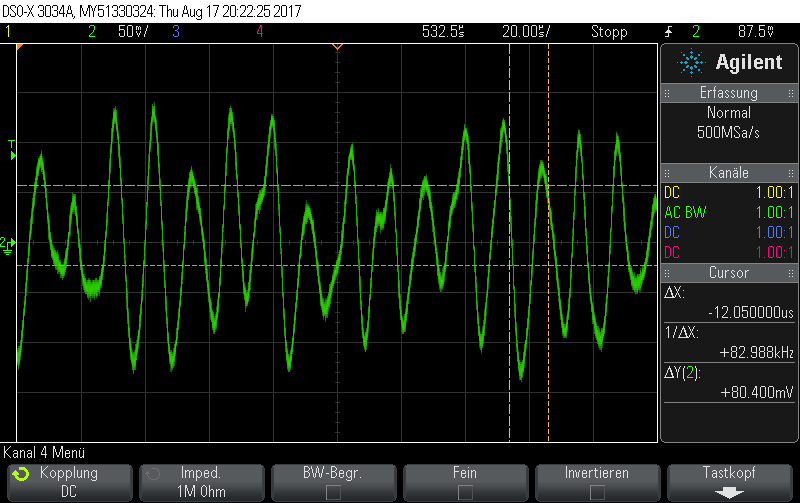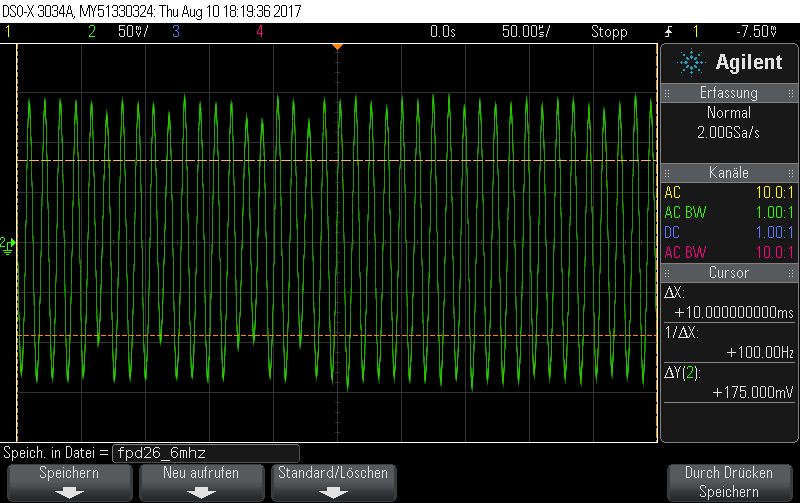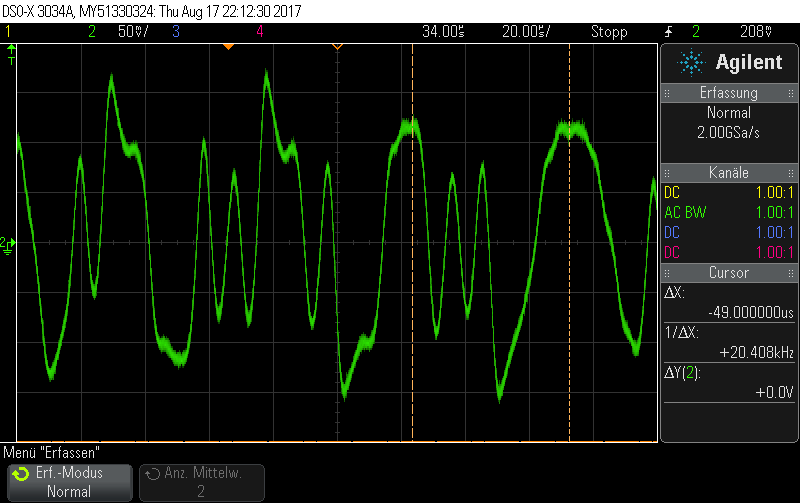Other Parts Discussed in Thread: LMX2571,
Hi there,
I am facing a problem that makes we wonder. I don't know where it comes from and how to get rid of it.
I'm stuck and maybe another point of view and input of others (you :-) ) could help to solve this problem!
I'm using the LMX2571 for 4-FSK modulation (GFSK via oversampling, I2S mode). I wanted to optimize PLL settings to get a better eye diagram. The symbol change has (i guess) an overshoot which I wanted to get rid of. But at the moment the demodulated signal is to much disturbed, I can't even control an eye-diagram. When I started to evaluate it was much better. I also was able to produce a sinusoidal FM modulation.
Looking now on a random GFSK signal it looks just like noise. That's why I'm showing you a change from FSK symbol 00 to 11 with oversampling, should be sinusoidal. But at the moment...well, take a look (markers are just somewhere, don't mean anything):
Averaging the signal, it is sinusoidal.
The following screenshot was taken in the past, much better but already a little bit disturbed. I think it was even better, but I don't have a screenshot of this "far away past".
I thought about corrupted I2S data, controlling huge arrays of data send to the LMX, but it looks all fine. It is repeating periodically, constant output. But it looks like the LMX sends the wrong deviations from time to time. Using a slower I2S data rate, increasing the baud rate, the disturbance get's even bigger, looking at the demodulated signal. But maybe it just stays equal high, looking only on the time domain. (markers show one periode, changing from symbol 11, 00, 11)
I played with the deviation, using lower deviation levels.
Here a screenshot of the I2S signal (red: CLK; blue: FS; yellow: DATA).
Detail of FS. If I had measured a bit better, it would have been more rectangular...
I also thought about wrong LMX settings, because I played with all kind of settings. But a can't find an fault or another setting to improve it.
Another thing it did, making the demodulation with another system, but looks similar. On other transmit frequencies the problem remains.
And I also thought about a OSC problem. I'm using the onboard LMX2571EVM oscillator at the moment. I tried with another one, doesn't improve it in any way.
What I didn't change yet: Replacing the PLL filter components.
I'm running out of options. Is my LMX maybe defective?
Any other ideas?
Thanks and kind regards,
Alex







